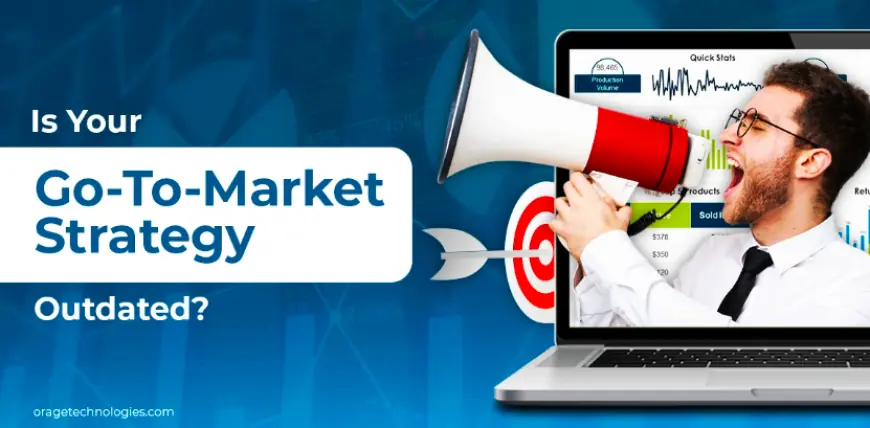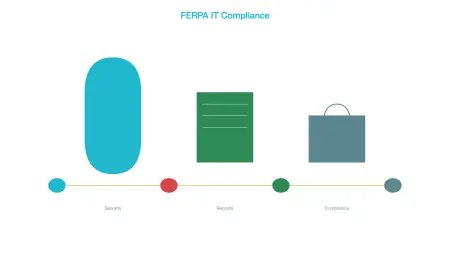Building a Customer-Centric Go-To-Market Strategy: Are You Truly Connecting with Your Audience?
Unlock the power of Google’s updated Search Console Insight and Discussion Forum filter. Learn how to leverage these tools to optimize your SEO and enhance your Go-To-Market Strategy in 2025.

In today's competitive landscape, a Go-To-Market Strategy needs to prioritize the customer above all else. Gone are the generic, product-focused launches that didn't consider everyone's own individual needs. Nowadays, businesses create strategies that prioritize customers in every decision made so that their strategies can stay relevant and truly resonate with their audience. But how do you create a Go-To-Market Strategy that allows your audience to connect with you? What steps can you take to ensure your launch speaks to the desires of your customers? In this blog post, we will explore how to develop a customer-centric Go-To-Market Strategy that encourages engagement and loyalty in 2025. So, let's get started with the key questions that will guide this process.
What is Customer-Centric Go-To-Market Strategy?
Customer-Centric go-to-market strategy emphasizes a holistic understanding in relation to the customer's needs and experience from the beginning to the end of the launch; messaging, channels, and savings must be tailored to fit audience needs and wants. For example, a tech company may place its focus on certain features of its product that are articulated from customer feedback. We leverage data and consumer data from sites like X to better understand what consumers want from us. Generally, our GO TO MARKET must lead to individualized, valuable touchpoints across all pathways of engagement (ads, email, or social-supported content). Consequently, customer-centric go-to-market strategies build confidence and reduce levels of apathy, while supporting engagement and also conversions.
Why Is Customer Focus Important?
Customers now expect brands to know their specific needs. Why is this important? Because according to a recent 2024 Epsilon study, 80 percent of consumers are more likely to buy from brands that create personalized experiences. A Go-To-Market Strategy not rooted in this will alienate its audience. Generic campaigns are particularly ineffective because today consumers are craving customized solutions for their problems. A brand that uses insights—including surveys and social listening on X—is likely to create launches that feel relevant. By building your Go-To-Market Strategy around customers, you are likely to increase engagements and get better outcomes.
How Do You Find Customer Needs?
Finding customer needs is what you base your customer-centric Go-To-Market Strategy on so let’s get into it. Where do you begin? With research. Gather and assess information from your website activity, purchase history, and social media interaction. For instance, if you look at X and track conversations, you can identify pain points and/or wants that your audience is sharing. You can also gather direct feedback from surveys, focus groups, etc. We can utilize this data and put it on the map within our Go-To-Market Strategy to ensure our launch is solving an actual problem for the customer. Plus, research will continue to identify customer needs based on their ever-changing wants and preferences. As you identify changes, you can pivot and adjust accordingly, which will help you stay fresh in the market.
How Technology Can Improve Customer-Centric Launches?
Technology week is a disruptor for customer-centricity. In addition to AI tools sifting through hundreds and millions of data points to predict customer behavior, allowing for accurate targeting - like identifying which X users are the most likely to engage with your campaign - machine learning algorithms can steal the show, too. There are also automation or engagement platforms like HubSpot that can enable a team to send personal email marketing to thousands individuals simultaneously. Automation allows a te Coast can even benchmark campaigns with similar campaigns in the past and assess performance in real-time so that teams can improve their approach by smartly re-adjusting their brand "Go-To-Market Strategy" based on performance data. Customizing and ca iling successful messages to existing customers allows teams to future-proof customer experiences that are smooth and advanced but contemporary and considerate of their expectations to reach their audience, and get noticed in a hybrid and crowded marketplace.
Why Is Feedback Important to Fine-Tuning Your Strategy?
Customer feedback is the GPS for your Go-To-Market Strategy. Why is it important? Because it can tell you what is and what isn’t working. For example, post-launch survey responses can show you whether your messaging was effective or not. You can also get customer input in real-time on social ways such as the platform X, and be able to pivot what you were doing after monitoring sentiment of customers quickly. By utilizing feedback loops within your Go-To-Market Strategy, you can fine-tune your campaigns in a fluid way to replace outdated campaigns and stay customer-centric. Additionally, customers will be able to see you are taking their feedback into account and acting on it, which accounts for a heightened trust and desire to want to come back to your brand.
How Do You Identify the Best Channels for Your Audience?
Choosing the right channels is critical to implementing a customer-centric Go-To-Market Strategy. Where does your audience spend their 'time'? Research is important. For example: if your target customers are producing content on X, creating shorter 'engaging' posts is more impactful. For B2B audiences, LinkedIn may play a more valuable role. Don't forget about email as a powerful channel for direct and personalized engagement. Use backend analytics to understand which channels (with organic/paid distribution) are driving the most engagement and establish your Go-To-Market Strategy accordingly. By meeting customers where they are, this helps your product feel accessible and relevant making it easier to reach customers.
Why is prioritizing emotional connections important?
Emotional connections can turn one-time buyers into lifelong champions. How do you do that? By creating a Go-To-Market Strategy that conveys a story. A brand launching a product in the wellness space, for example, may share client success stories in a relatable way. Posting authentic, humanized content on X, such as behind-the-scenes content, engages customers on a deeper level. By aligning the Go-To-Market Strategy to customer values, such as sustainability or inclusivity, you foster those emotional connections. If you focus on narrative and values - you create a launch that has meaning, which encourages customers to engage with your brand deeper.
How Do you Assess Customer-Centric Success?
Evaluating success is critical to making sure your Go-To-Market Strategy is having desired results. What is the measuring stick? Looking at engagement, retention and satisfaction, will help the brand determine if it is successful. Try tracking the click-through rates on personalized ads, or revisit purchases and measure loyalty via those products. Programs like Google Analytics or your customer management systems will show customer behavior. In evaluating your social media, especially X, you may see likes, shares and comments while evaluating sentiment. With NPS (Net Promoter Score) or surveys and polls, you begin understanding how likely customers are to refer your brand. By focusing on these metrics, you are sharpening up your Go-To-Market Strategy, striving for improvement, and building customer-centric, sustainable growth.
Frequently Asked Questions About Customer-Centric Go-To-Market Strategies
How Do You Start Building a Customer-Centric Go-To-Market Strategy?
Begin by researching your audience’s needs through surveys, X analytics, or purchase data. Use these insights to tailor every aspect of your Go-To-Market Strategy, from messaging to channel selection.
What’s the Biggest Mistake in Customer-Centric Launches?
Assuming you know your audience without data is a common error. A Go-To-Market Strategy must rely on research to avoid misaligned campaigns that fail to connect.
How Can Small Businesses Implement This Approach?
Small businesses can use cost-effective tools like social media analytics or free CRM platforms to understand customers. A targeted Go-To-Market Strategy maximizes impact with limited resources.
Why Is Consistency Important Across Touchpoints?
Consistency in messaging and branding builds trust. A cohesive Go-To-Market Strategy ensures customers receive the same experience across X, email, or your website, reinforcing reliability.
How Do You Keep Your Strategy Customer-Focused Over Time?
Regularly collect feedback through surveys or X monitoring. Update your Go-To-Market Strategy based on evolving customer needs to maintain relevance and engagement.
Conclusion: Put Customers at the Heart of Your Go-To-Market Strategy
A customer-centric Go-To-Market Strategy is the key to thriving in 2025’s competitive market. By prioritizing research, personalization, and emotional connections, you create launches that resonate deeply with your audience. Technology and feedback ensure your Go-To-Market Strategy stays agile and relevant, while the right channels amplify your reach. Ask yourself: Does your launch truly speak to your customers? With a customer-focused approach, you’ll not only drive immediate success but also build lasting relationships that fuel long-term growth. Start crafting your strategy today to connect and convert.
What's Your Reaction?
 Like
0
Like
0
 Dislike
0
Dislike
0
 Love
0
Love
0
 Funny
0
Funny
0
 Angry
0
Angry
0
 Sad
0
Sad
0
 Wow
0
Wow
0




















































